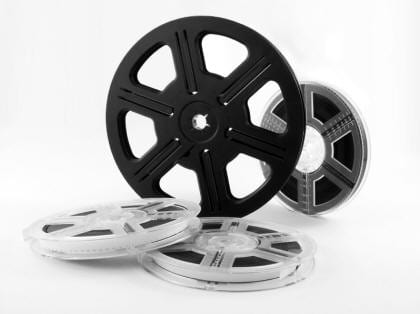Today I’m going to take you through the post-production journey that transforms your raw footage into a professional video.
00:32 – Colour Grading
00:53 – Adding Colour
01:16 – Sound
02:08 – Titles
02:32 – Editing
02:44 – Transitions
Let’s go through the process we use in post-production to get a video looking as nice and professional as possible. Without a good post-production process, your video just won’t be as eye-catching as it could be.
The first technique is called “Colour Grading”.
You might think that your video already looks pretty good, but by using some professional video editing software, you can tweak the colours a bit to give it a more cinematic feel. This process can be very technical, so it’s usually best to leave it to the professionals. Also remember that sometimes you might want a little bit of colour to enhance the video.
For a warmer effect we can use a little more orange, or adding a touch of blue can give it a cooling effect. This can boost your video, depending on the scene and what feeling you want. But for now, lets just stick with this.
Next up is the sound.
Your sound may be good straight out of the micrcophone, but with a little mixing, you can make the audio really pop. You may have great looking footage, but don’t forget that the audio is just as important in getting the video to a professional level. Music is also important to add in post-production. It can have a great effect on the feeling of your video. Maybe you’d like a fast-paced, kinetic feeling soundtrack. Or maybe a slower, safe and secure vibe.
Depending on what the purpose of your video is, music can help reinforce the feeling you want your audience to have at any point in the video.

You may have noticed that this video has used some slides and titles. Titles are a great way to:
- Hone in on specific ideas
- Emphasise key points
- Chapter your video into digestible segments
By simplifying what your video is about into listed points or title screens, your audience will easily remember the key points of your video.
That brings us to the actual editing of the footage. There is a lot to think about when editing a video. Do you have multiple angles to go through, to emphasise a point or change topics? Do you need transitions between shots, or simple straight cuts? Remember to use transitions sparingly. Often, transitions are overused, which can date the video and draw attention the effects, rather than the message of the video. It’s better to keep a more classic look, to get the longest lifespan out of your video.
Are you cutting tight enough to lift the pace and keep your viewer interested? Do you need to resize the image a little to frame the shot nicely? These things aren’t usually noticeable in a final video, unless you do them poorly. Your audience should be focusing on the message of the video, not the editing.
Once all of these steps have been implemented, you should have a great video to show the world.
If you have any questions or need a professional camera crew, don’t hesitate to contact me at Dream Engine and I’ll be happy to help. Be sure to subscribe to my channel to receive regular video updates on new video marketing tips and tricks.

Ryan Spanger is one of Melbourne’s most respected and sought-after video production professionals. Ryan founded Dream Engine in 2002, and specialises in helping medium to large corporates, government departments, and the non-profit sector to connect with their audience more effectively by using video.
